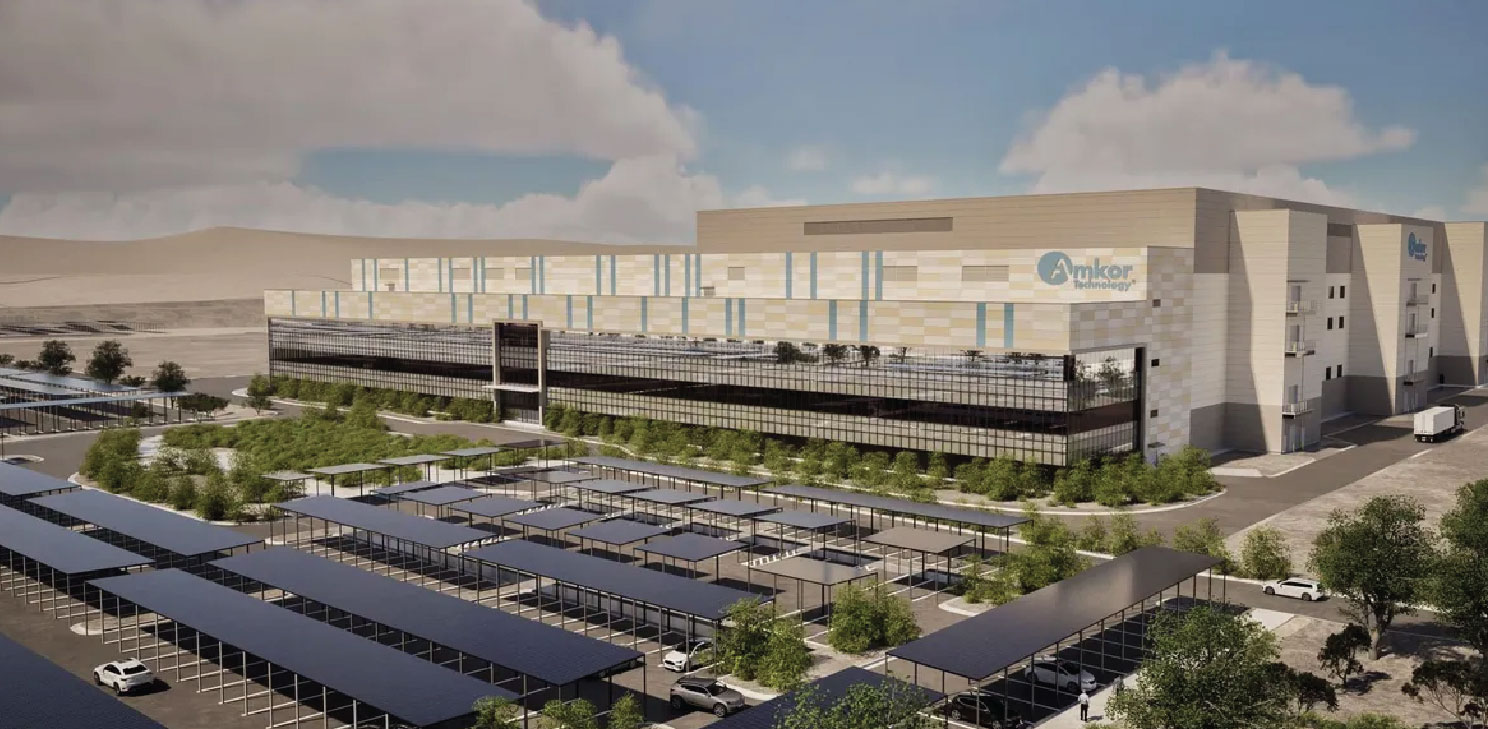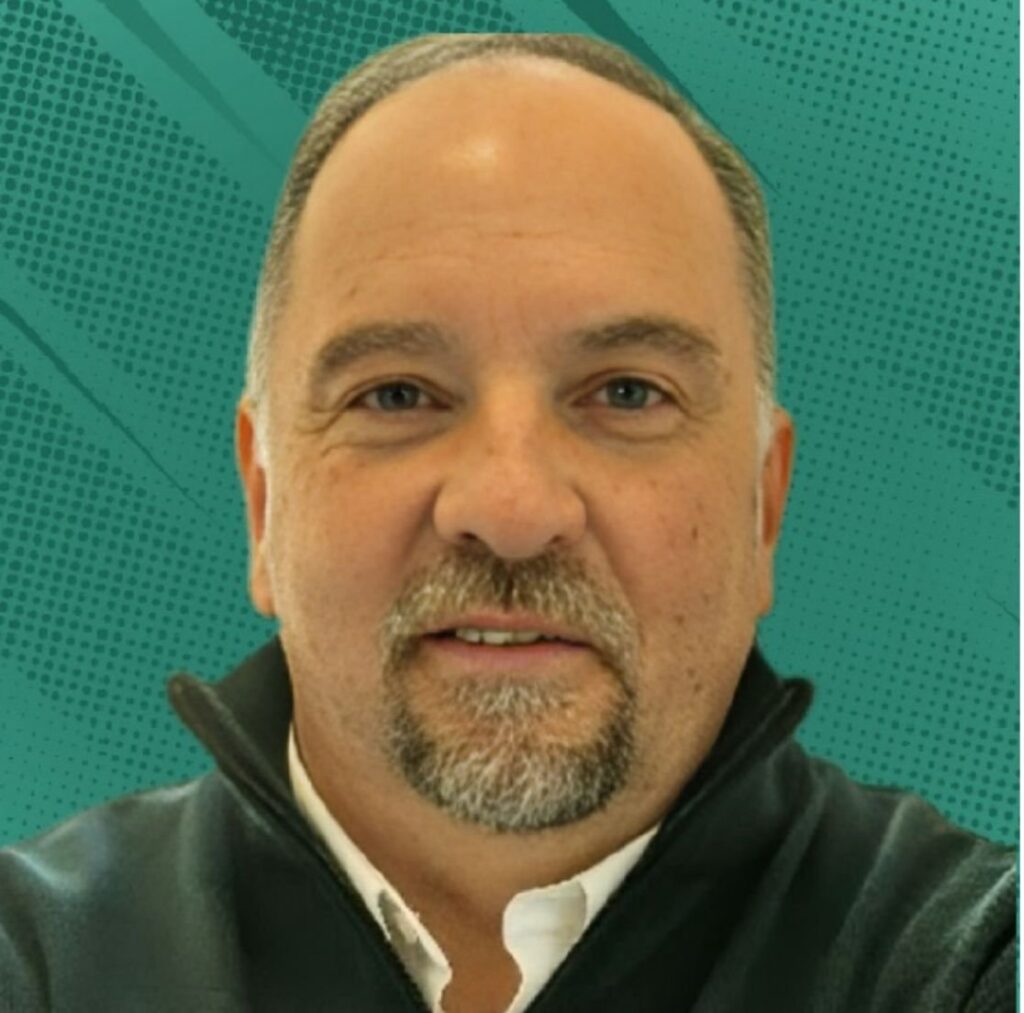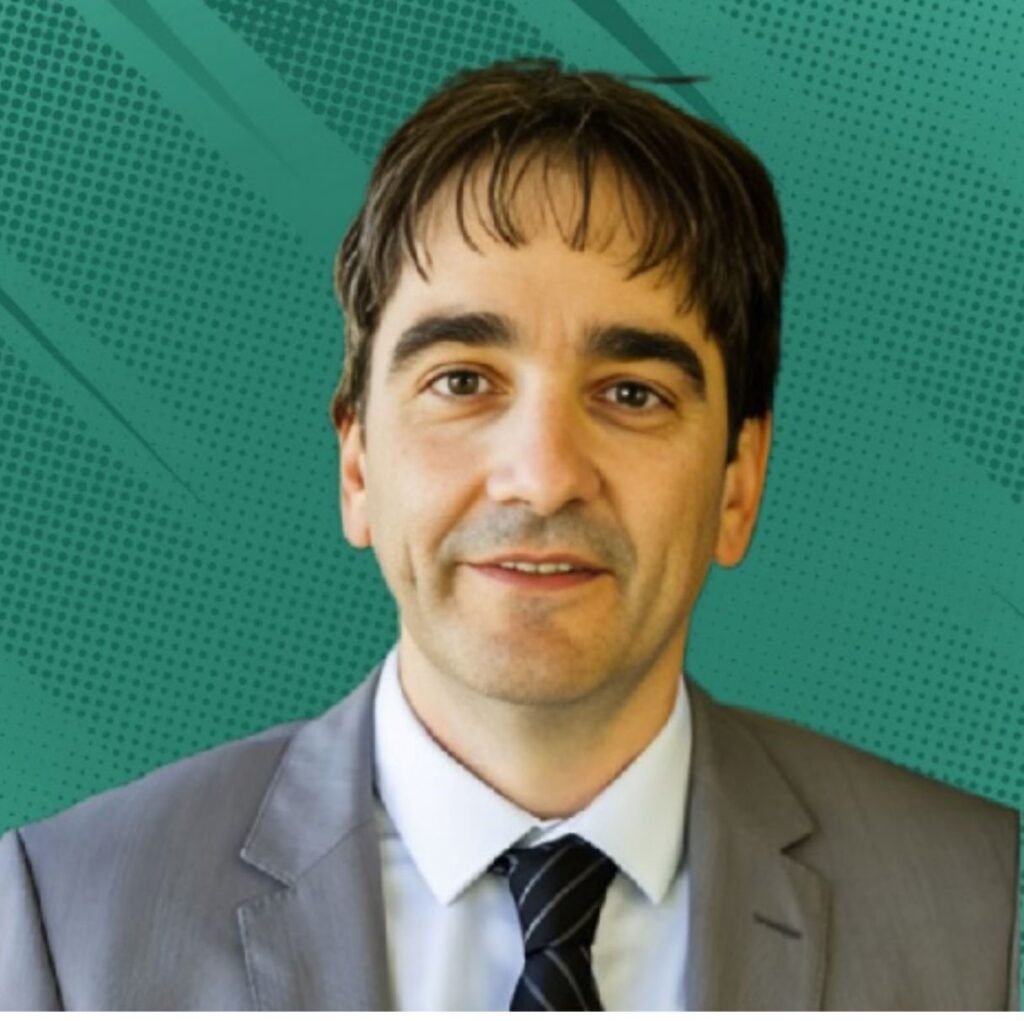The 6th Design And Development Of Zero-Emissions Off-Highway Machinery Summit took place from May 21st to 22nd, with attendees from all over the zero-emissions off-highway machinery industry coming together at the Holiday Inn Berlin Airport Conference Centre. The two day conference had a wide and comprehensive agenda that involved dozens of presentations from expert speakers, panel discussions, and networking breaks.
Our attendees discussed the challenges and opportunities related to developing new technologies, focusing on advancements in electric, hybrid, and alternative powertrains, as well as drive integration and energy management, and the broader implications of sustainability within the industry.
This article will provide a session recap for those who didn’t get the chance to attend and serve as a reminder for those who attended.


Towards 100% electrification of machines – can we ever reach it?
Jukka Borgman, Director Technology and Research at Kalmar
Jukka shared how machinery manufacturers have been investing heavily in electric machinery development. However, new challenges have emerged in electrification, such as autonomy in energy, energy refill, and energy infrastructure. To get electrification R&D done, the industry needs to focus and prioritise R&D and technology development work and ‘do the right things’ as well as think about resourcing and efficiency and ‘do the things right’. They should also consider the competences for electrification.


Battery Building Blocks for cost efficient Fixed & Scalable Battery Systems
Maarten Kelder, CTO at Cleantron
Maarten discussed the costs, packaging, space, mass, safety, power, charging speed, and cycle life of Cleantron’s battery solutions. The L11 LFP Prismatic Module includes safety measures such as thermal isolation between large prismatic cells to prevent thermal propagation and individual contactors on each battery module. The Cleantron Brick Platform offers the best performance and safety at the lowest costs, featuring world-class thermal and electric propagation suppression via laser-welded tabs with integrated fuses and mainstream volume production technology. The Cleantron CLP XL is a brick-based swappable battery for better TCO, while the N4 Traction Module features a robust design and 4.6 kWh capacity.

Bridging Hardware and Software: Advancing Electric Infrastructure for Smarter and Greener Construction Sites
Sebastian Hellmann, Sales Manager at Liebherr Elektronics and Drive
Sebastian discussed how current problems with electric machinery include complex consumers (e.g. crane peak loads, container constant loads), a complicated and slow grid connection process, unclear power connection availability, long and complex electricity contracts, limited electric machine availability, and high-maintenance Stage V solutions. Upcoming problems involve high energy demand for high-power charging, complex energy planning, limited diesel generator compensation, and stricter regulations. Liebherr introduces a mobile energy storage system based on Li-ion batteries (NMC) to balance supply and demand, lower operational costs, promote sustainability, and replace Stage V gensets. A web-based tool enables software-based, manufacturer-independent electrical planning on construction sites, supporting grid operator identification, infrastructure planning, and efficient battery storage use.

Zero-emission construction machinery – ECO system and use case learnings
Gustav Boberg, Segment Leader at Volvo CE
Gustav spoke about how learnings from use cases and the ECO system accelerated the path to zero by working together in the value chain – partnership is the new leadership. He shared how cities like Stockholm and London are making the electric transformation happen. He discussed lessons learned by Volvo in implementing zero-emission job sites: the importance of value chain collaboration, the ECO system approach, and the many advantages of electric machines beyond CO₂ reduction, such as no harmful pollutants and less noise. Electric machines have at least as good performance as diesel ones. Urban areas are driving the transition, and the process should begin by electrifying “simple” projects with the right conditions.


Immersion-cooled battery systems for applications with advanced safety requirements
Michael Kuehner, Managing Director at Fischer Power Solutions
Michael represented our sponsor on the stage as he spoke about how immersion-cooled battery systems for off-highway applications are the most effective technology to absorb and remove heat, especially for high-performance use. They ensure homogeneous temperature distribution in the module, increasing service life. Battery systems in safety-critical environments must meet international standards and Chinese mandatory national battery regulations. Inherent safety is increased through a cell holder made of high-temperature polyurethane foam, which thermally insulates battery cells and slows thermal propagation. Immersion cooling further reduces hot spot risk. A proprietary battery management system allows direct control, monitoring, and additional system functions.

Diesel Engines and Alternative Propulsions in Agriculture: Technological Challenges and Opportunities for a Low-Emission Future
Luca Crippa, Engines & ATS Engineering Senior Manager at CNH Industrial
Luca spoke about how agricultural power needs range from low-power machines to over 1000 HP, with typical duty cycles and application-specific demands, with diesel still dominating due to efficiency and durability, with recent advancements improving emissions. Alternative fuels can suit certain agricultural uses, while hybrid powertrains offer transitional benefits by improving efficiency or enabling downsizing. Full electric propulsion shows promise but faces limitations across power segments. The future requires increased productivity, sustainability, and environmental responsibility. A pragmatic roadmap includes electric, hybrid, fuel cell, and alternative fuels, despite current constraints but diesel remains vital in the short term. Emission reductions can be achieved through downspeeding and aftertreatment to preserve performance. Collaboration among OEMs, farmers, regulators, and researchers is essential for a successful transition.

Advancing Zero-Emission Off-Road Equipment: Strategies for Scalable Adoption
Daniela Day Tejo, Project Manager Off-Road Equipment at CALSTART
Daniel started her presentation with the fact that the non-road sector contributes around 22% of transport-related NOₓ emissions and over 20% of PM2.5 emissions, with construction equipment alone responsible for ~11% of diesel particulate matter in urban areas. To meet climate goals, California has introduced CARB regulations to phase out polluting fleets and the CORE incentive programme to make zero-emission equipment affordable. California’s regulatory, financial, and strategic approach serves as a model for scalable action and supports the Global MOU Off-Road Working Group. Her strategic recommendations include integrating policy, data, and funding, focusing on high-emission sectors, empowering local leadership, and encouraging global collaboration and alignment.


Integration and operational challenges with large electric forklift trucks
Olaf Van Straaten, Director Engineering at Hyster-Yale Materials Handling
Olaf shared that Hyster® is developing a full line of zero-emission materials handling solutions for ports and heavy industry, including fully battery electric and fuel cell hybrid options. Industry challenges include determining power needs, integrating power into trucks, and organising technical support. Vehicle operational simulations and continuous data collection are valuable for understanding operations, troubleshooting, improving future upgrades, and accelerating powertrain design for other products. Collaboration is essential, as partnerships with suppliers, peers, and universities support innovation and problem-solving.

Alternative Fuels Roadmap for Off-Highway Equipment
Ralf Diemer, Managing Director at eFuel Alliance
Ralf discussed global emission standards shaping the alternative fuels roadmap for off-highway equipment and their compatibility with existing heavy machines. LCAs show that different technologies reduce GHG emissions depending on use. eFuels and hybrid systems suit high-power machines with long operating hours, offering a reliable, sustainable option for tractors, harvesters, and loaders. Battery-electric drives are ideal for low-power, short-duration tasks with easy charging access. Gas and hydrogen act as transitional technologies. eFuels offer immediate integration into current combustion engines without major changes, making them a practical, scalable drop-in solution as renewable infrastructure develops. His recommendations to encourage the use of eFuels include infrastructure development, sector-specific recognition, technology neutrality, and investment support.

Cost effective solutions for rapid deployment in off-highway applications
Dr Jay Al-Tayie, Technical Authority Head – PEMD at Ricardo plc
Jay discussed how electrification is gaining momentum as technology advances and environmental concerns and legislation grow. Off-highway market demand is expected to grow 20% by 2030 due to rapid urbanisation and increased global infrastructure activity. Electrical and hybrid systems make OHVs more efficient and emissions compliant, offering reduced TCO, fuel economy, optimised design, modular platforms, integrated solutions, improved performance, and a green footprint. Challenges include additional costs, new skills, and integration constraints. Ricardo provides services from strategy and design to testing, certification, and supply chain management. Jay introduced Ricardo’s solutions, the Alumotor, a synchronous reluctance traction machine with aluminium windings and no REE magnets and VICS, a virtual development platform, which combines RicVCS and V-SIM to help lower costs and improve reliability.


Biomethane – alternative fuel for agriculture
Klaus Senghaas, Market leader Alternative Fuels at CNH – New Holland
Klaus shared his insights on how biomethane fits agriculture as a clean, simple, CO₂-negative fuel derived from agricultural products. It is well-to-wheel CO₂ negative, independent from fossil fuels, and supports regional value creation. New Holland methane tractors, such as the T6.180 Methane Power, are already in production. The T7 Methane Power is currently being tested with potential customers. Since October 2024, over 30 events have taken place with successful tests and customers are convinced by the power and performance of the methane tractors.

Beyond Fossils: How Renewable Fuels Can Reduce GHG Emissions Today
Gerardo Delás, Senior Researcher at Neste
All solutions are needed to combat climate change, Gerardo said in his keynote presentation. Renewable diesel offers a strong decarbonisation alternative for the off-highway sector, reducing greenhouse gas emissions by up to 95% over its life cycle compared to fossil diesel. It can be used in any diesel engine and existing infrastructure, either as a neat product or blend. With the highest diesel quality, it also lowers local emissions such as particulates, NOx, and CO. Renewable carbon continues circulating within the ecosystem. Neste Renewable Diesel, made from 100% renewable raw materials, supports businesses and individuals in reducing their climate impact and accelerating the move towards carbon neutrality. Renewable fuels are scalable, and both electrification and renewable fuels are essential for effective decarbonisation today.

Off-Highway Machinery Meets Hydrogen: A New Era of Power
Georg Toepfer, Coordinator Advanced Engineering at DEUTZ
Georg shared his insights on how hydrogen combustion engines are well-suited to the tough operating conditions in the NRMM sector. This proven ICE technology delivers consistent performance in harsh environments and can be an integral part of a clean energy future. It offers high serviceability, easy maintenance, long-term reliability, minimal downtime, and efficient operation. DEUTZ provides a complete H₂-drive system, including engine and tank, offering an individual yet standardised solution. Its modular design concept features tank systems tailored to each machine application, based on modules with 2, 4, or 6 H₂-tubes. Everything comes from a single source, with standardised interfaces and simple installation. The system is cost-efficient, using existing, certified tanks.


Power up: Increasing efficiency for the future of electric construction machinery
Roger Staubli, Head of Project Management at SUNCAR
Roger reiterated that efficiency is the key to driving exploration, pushing technical boundaries, gaining experience, and leading innovation in a transforming industry. While technology sets the limit, real-world performance depends on human factors such as driving behaviour, machine knowledge, task planning, and climate control discipline. Remote operational data analysis, GPS tracking, early fault detection, live support, and remote updates enhance system efficiency. Battery technology optimisation focuses on improving performance and range, supported by intelligent energy management systems for efficient energy use and modern software to reduce consumption. These measures show that sustainable working is achievable without sacrificing efficiency. Efficiency is a game-changer, enabling cleaner, quieter, and more cost-effective construction while drastically reducing emissions and operating costs.

Decarbonization pathways of NRMM – Roadmap to Future Mobile Machine 2035
Johannes Hyrynen, Research Manager Transport Technologies – Leadership Lead at VTT Technical Research Center of Finland
Johannes spoke about how NRMM decarbonisation faces several challenges to achieve a complete transition. A simulation model has been developed and experimentally validated for a fuel cell system that charges a stationary battery, acting as a buffer for hybrid or electrified NRMM in off-grid scenarios. The container solution is not limited to fuel cells but can support various alternative energy carriers for off-grid use. The exact pathways to regulate CO₂ in NRMM depend on factors such as the development of battery technology, the availability and cost of green hydrogen, and the utilisation of green energy supplies through mixed on- and off-grid electricity sources.
Sponsors
The 6th Design And Development Of Zero-Emissions Off-Highway Machinery Summit was supported by a wide range of sponsors who brought their teams to our exhibition hall, and Innovatrix would like to thank them again for their support.

If you want to attend our next zero-emissions off-highway summit and have the opportunity to hear presentations like these and many more, join us for our American edition this December. To discover the latest innovations and trends in electrifying off-highway machines, meet with solution providers and hear talks from industry leaders, attend DZOMUSA – the 6th Design and Development of Zero-emissions Off-highway Machinery Summit taking place in Louisville, Kentucky, USA on December 10-11, 2025.
For more information, visit our website or email us at info@innovatrix.eu for the event agenda. Visit our LinkedIn to stay up to date on our latest speaker announcements and event news.









